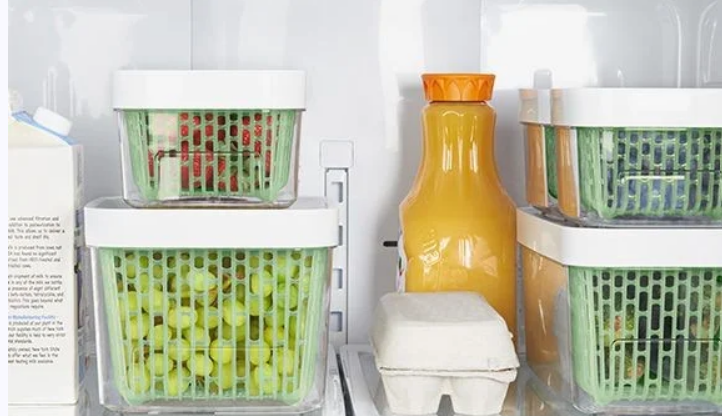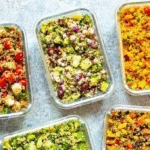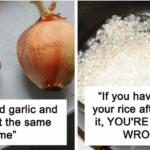Food Storage Tips: How to Keep Fruits & Vegetables Fresh Longer
We’ve all been there—you stock up on fresh fruits and vegetables with the best intentions, only to find wilted spinach, moldy berries, or shriveled carrots sitting sadly in your fridge just days later. Not only is it frustrating, but it’s also costly. In fact, according to the USDA, the average American family wastes over $1,500 worth of food each year, with fresh produce being the most common casualty.
The good news? With the right food storage tips and tricks, you can keep fruits and vegetables fresh much longer, cut down on waste, and make your grocery budget stretch further.
In this guide, we’ll cover science-backed strategies, real-life stories, and practical tips on how to extend the shelf life of your produce—without fancy equipment or complicated steps.
Why Proper Storage Matters
Story: Sarah, a working mom of three, used to throw away a bag of spinach every week. She thought it was unavoidable until she learned to store leafy greens with a paper towel in a breathable container. Suddenly, her greens lasted twice as long, and she saved over $30 a month just by wasting less food.
Proper storage helps you:
Save money.
Reduce food waste.
Eat healthier because fresh produce is always available.
Maintain flavor and nutrients.
10 Proven Tips to Keep Fruits & Vegetables Fresh Longer
1. Separate Ethylene-Producing Fruits
Some fruits naturally release ethylene gas, which speeds up ripening—and can cause nearby produce to spoil quickly.
High ethylene producers: apples, bananas, avocados, peaches, tomatoes.
Keep away from: leafy greens, carrots, broccoli, cucumbers.
Case Study: Researchers at UC Davis found that broccoli stored with apples yellowed 50% faster due to ethylene exposure.
Pro Tip: Store ethylene producers in a separate drawer or paper bag.
2. Store Leafy Greens With Paper Towels
Moisture is the enemy of delicate greens like lettuce, spinach, and kale.
Wash and dry thoroughly, then layer with paper towels in an airtight container. The towel absorbs excess moisture, keeping greens crisp.
Story: A food blogger tested two bags of spinach—one stored in its original packaging, one with paper towels. The second bag lasted five extra days without sliming.
3. Use Glass Jars for Herbs
Herbs wilt quickly, but treating them like fresh flowers makes them last longer.
Method: Trim stems, place in a jar with an inch of water, cover loosely with a plastic bag, and refrigerate.
Case Study: Cook’s Illustrated found cilantro stored this way stayed fresh for over 2 weeks, compared to 4 days in a plastic bag.
4. Don’t Wash Produce Until Ready to Use
Washing adds moisture, which can speed spoilage. Instead, rinse right before eating or cooking.
Exception: Berries. For berries, wash in a vinegar-water solution (1:3 ratio), dry thoroughly, then refrigerate. This kills mold spores and extends shelf life.
Story: John, an avid meal prepper, switched to the vinegar rinse method and doubled the lifespan of his strawberries—from 3 days to nearly 7.
5. Use Breathable Storage Bags
Plastic traps moisture and accelerates decay. Instead, use breathable mesh or perforated bags for produce like onions, garlic, and potatoes.
Pro Tip: Store potatoes in a cool, dark pantry—not the fridge, which converts starches into sugars.
6. Know the Counter vs. Fridge Rule
Some produce lasts longer at room temperature, while others need refrigeration.
Counter: bananas, onions, tomatoes, avocados (until ripe).
Fridge: grapes, berries, apples, leafy greens, carrots.
Case Study: A Cornell University study showed tomatoes stored in the fridge lost 65% of their flavor compounds compared to those left on the counter.
7. Wrap Vegetables in Foil
Some veggies, like celery and broccoli, last longer when wrapped in aluminum foil and stored in the fridge. Foil allows excess moisture to escape while preventing drying out.
Story: Lisa, who struggled with limp celery, tried the foil trick after reading it in a nutrition forum—her celery stayed crisp for 2 full weeks.
8. Freeze for Future Use
If you can’t eat produce in time, freeze it. Blanch vegetables like green beans or spinach, then store in freezer-safe bags. Fruits like bananas and berries freeze beautifully for smoothies.
Tip: Portion fruits into small bags for quick grab-and-blend breakfasts.
Case Study: A Canadian study showed households that froze surplus produce reduced food waste by 30%.
9. Invest in Produce-Saving Gadgets
Modern solutions like vacuum-seal containers, “freshness extenders,” and ethylene-absorbing fridge packs can extend shelf life significantly.
Story: A Reddit user shared that after switching to vacuum-sealed containers, their weekly food waste dropped by 40%.
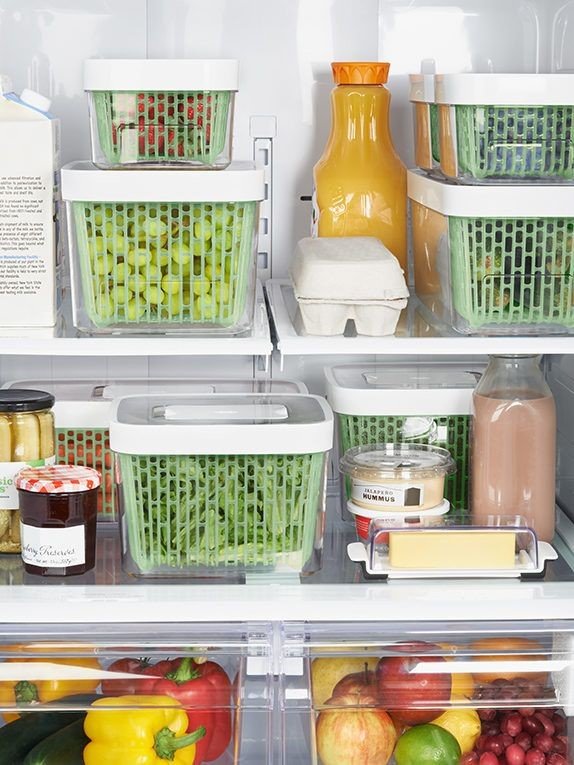
10. Label and Rotate
Sometimes the simplest trick is the most effective. Label containers with dates and place older produce in front to use first.
Case Study: In a household food waste experiment in the UK, simply rotating produce cut waste by 27% in three months.
Common Mistakes That Spoil Produce Faster
Washing everything at once.
Storing onions and potatoes together (they make each other sprout).
Refrigerating tomatoes (kills flavor).
Overpacking the fridge—produce needs air circulation.
The Science Behind Freshness
Why do some produce items spoil faster than others?
Ethylene gas accelerates ripening.
Moisture encourages mold and bacteria.
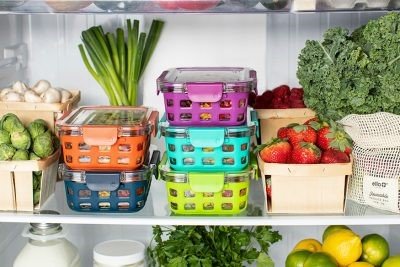
Temperature affects respiration rates.
Mini Case Study: At the University of Florida, scientists compared strawberries stored at room temperature vs. refrigerated at 32°F. The refrigerated strawberries lasted 10 days longer without visible mold.
Final Thoughts
Keeping fruits and vegetables fresh longer doesn’t require expensive gadgets—it’s about understanding how different produce behaves and creating the right environment for storage.
By separating ethylene producers, controlling moisture, and using clever storage hacks, you’ll not only save money but also enjoy fresh, flavorful produce every day.
Remember, food waste isn’t just about money—it’s about sustainability. Every time you extend the life of your produce, you’re helping reduce global waste and creating a healthier kitchen.
References
USDA – Food Waste in America
Harvard School of Public Health – Reducing Household Food Waste
UC Davis – Ethylene Sensitivity of Vegetables
Cook’s Illustrated – Best Way to Store Fresh Herbs
Cornell University – Tomato Flavor Study
America’s Test Kitchen – The Foil Celery Trick
Healthline – How to Store Produce Properly
University of Florida – Strawberry Shelf Life Study
BBC Good Food – Freezing Fruits and Vegetables
Food52 – Best Kitchen Gadgets for Storage

